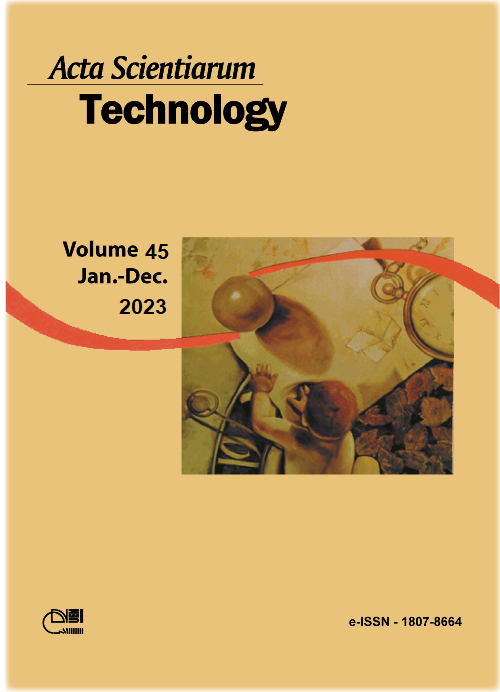Adsorption of food dye using activated carbon from brewers´ spent grains
DOI:
https://doi.org/10.4025/actascitechnol.v45i1.60443Palavras-chave:
adsorbent; biomass; characterization; tartrazine yellowResumo
Brewers' spent grains are the main residue generated from the brewery industry; they are produced on a large scale and at a low cost. During the brewing process, approximately 85% of all barley used is transformed into solid residue, which is currently destined for animal feed or just discarded. A possibility to increase the value of this byproduct is the production of carbonaceous materials, such as activated carbon, for the treatment of tartrazine yellow dye solutions. The structures and morphologies of the samples were characterized. Furthermore, the adsorptive capacity and kinetic behavior were studied. Regarding the characterization of the material, the activated carbon presented a porous morphology and high surface area (768.4 m² g-1). Additionally, the kinetic study showed that the equilibrium time of the adsorption process from the tartrazine yellow dye discoloration was 60 min., and the data presented dispersion according to Elovich´s kinetics. It was possible, from the experimental design, to evaluate the adsorptive capacity of the material in which it performed best at pH < 5. Finally, in the equilibrium study carried out by the adsorption isotherms, it was found that the increase in temperature influenced the process, raising the maximum adsorptive capacity in which the data fit into the Langmuir isothermal model
Downloads
Referências
Downloads
Publicado
Como Citar
Edição
Seção
Licença
DECLARAÇíO DE ORIGINALIDADE E DIREITOS AUTORAIS
Declaro que o presente artigo é original, não tendo sido submetido í publicação em qualquer outro periódico nacional ou internacional, quer seja em parte ou em sua totalidade.
Os direitos autorais pertencem exclusivamente aos autores. Os direitos de licenciamento utilizados pelo periódico é a licença Creative Commons Attribution 4.0 (CC BY 4.0): são permitidos o compartilhamento (cópia e distribuição do material em qualqer meio ou formato) e adaptação (remix, transformação e criação de material a partir do conteúdo assim licenciado para quaisquer fins, inclusive comerciais.
Recomenda-se a leitura desse link para maiores informações sobre o tema: fornecimento de créditos e referências de forma correta, entre outros detalhes cruciais para uso adequado do material licenciado.















